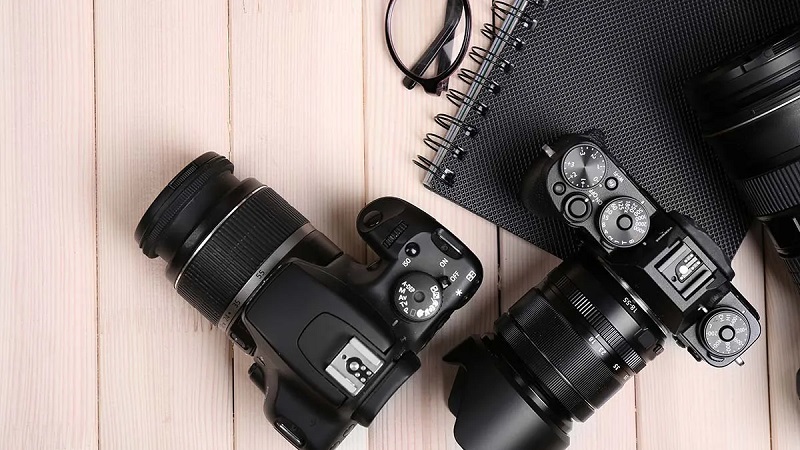Classic Camera Designs for Film Enthusiasts

In today’s digital age, where technology advances at an unprecedented rate, there is still a place for the timeless beauty of classic camera designs. For film enthusiasts, these vintage cameras hold a special allure that goes beyond their functionality. From their unique aesthetics to their craftsmanship, classic cameras evoke a sense of nostalgia and offer a tangible connection to the art of photography. In this article, we will explore the enduring appeal of classic camera designs and delve into some of the iconic models that have captivated the hearts of film lovers for decades.
Timeless Designs of Vintage Cameras
Vintage cameras possess an undeniable charm that sets them apart from their modern counterparts. Their elegant and sturdy designs evoke a sense of nostalgia, reminding us of a bygone era when capturing a moment required patience and precision. Rangefinders, SLRs, and medium format cameras are among the iconic designs that have stood the test of time.
Rangefinders, with their compact and sleek bodies, offer a discreet and efficient shooting experience. Models such as the Leica M series and the Contax G2 are renowned for their superb build quality and exceptional optics. SLRs, on the other hand, provide versatility and reliability.
Cameras like the Nikon F series and the Canon AE-1 are beloved for their robust construction, ergonomic controls, and wide selection of lenses. Lastly, medium format cameras, such as the Hasselblad 500C and the Rolleiflex TLR, offer superior image quality and a unique shooting experience with their waist-level viewfinders.
Functionality and Craftsmanship
Beyond their aesthetics, classic cameras are admired for their functionality and craftsmanship. These cameras were designed to be intuitive and precise, allowing photographers to have full control over their craft. Manual controls, including aperture rings, shutter speed dials, and focus knobs, offer a hands-on approach that fosters a deeper understanding of the photographic process.
Craftsmanship is another hallmark of classic cameras. Built to withstand the test of time, these cameras were often constructed with metal bodies, ensuring durability and longevity. The mechanical precision found in classic camera designs is a testament to the meticulous craftsmanship of the past. The smooth click of a shutter release and the precise movement of film advance mechanisms create a tactile experience that is often missing in today’s digital cameras.
Popular Classic Cameras
Numerous classic camera models have achieved legendary status among film enthusiasts. The Leica M3, introduced in 1954, remains an icon of rangefinder photography. Its simple yet elegant design, coupled with exceptional optics, has made it a sought-after camera among professionals and collectors alike. The Nikon F2, released in 1971, is celebrated for its robust build and versatile system, making it a favorite choice for many photographers.
Medium-format cameras also have their fair share of beloved classics. The Hasselblad 500C, launched in 1957, is synonymous with medium-format photography. Its modular design, exceptional image quality, and reliable mechanics have made it a staple in the medium format world. Another notable camera is the Rolleiflex TLR, which offers a unique twin-lens reflex shooting experience and has been cherished by photographers for its exceptional optics and timeless design.
Maintaining the Legacy
For those lucky enough to own a classic camera, proper maintenance is essential to keep these vintage gems in pristine condition. Regular cleaning, lubrication, and servicing by experienced professionals will help ensure that your camera continues to perform optimally.
As for shooting with film, proper storage is crucial to maintain the quality of your films. Film rolls should be kept in a cool, dry place away from direct sunlight. When stored correctly, films can last for several years, although it is generally recommended to use them within a year or two for optimal results. Additionally, when discussing film formats, there is a distinction between 8mm and Super 8. While both formats are popular in the realm of home movies, Super 8 offers improved image quality and wider availability of equipment and film stock.
The process of developing and digitizing film photographs adds to the allure of shooting with classic cameras. Many photographers find joy in the hands-on process of developing their own film, allowing them to have full control over the final result. Once developed, film photographs can be digitized using scanners or specialized services, enabling easy sharing and printing in the digital age.
Classic camera designs continue to captivate film enthusiasts with their timeless charm and unique aesthetics. The functionality and craftsmanship found in these vintage cameras offer a tangible connection to the art of photography, reminding us of a time when capturing an image required patience and skill. Whether it’s the sleek rangefinders, versatile SLRs, or the unmatched image quality of medium format cameras, these classic designs have left an indelible mark on the world of photography. So, for those who appreciate the artistry of film photography, the allure of classic camera designs remains as strong as ever.